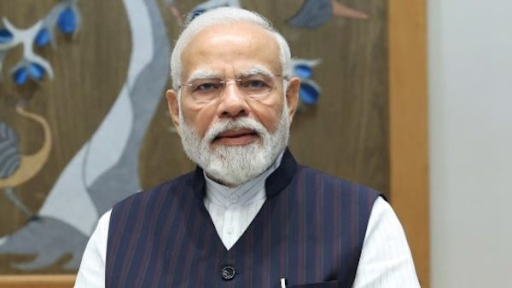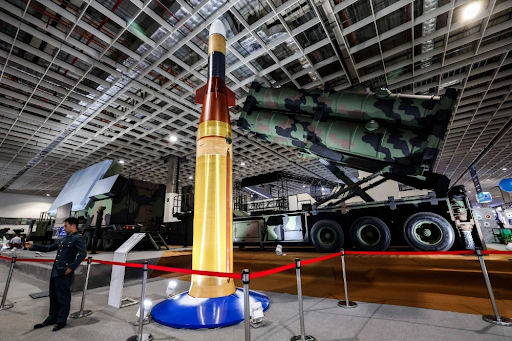



India and Bhutan share a unique partnership central to India's Neighbourhood First policy and regional security. PM Modi’s visit reaffirmed this bond, but China’s growing influence poses challenges. Strengthening sovereignty, expanding cooperation into digital and space sectors, and deepening people-to-people ties will keep the partnership future-ready.

Copyright infringement not intended
Picture Courtesy: NEWSONAIR
The Prime Minister of India to visit Bhutan to inaugurate the Punatsangchhu-II Hydroelectric Project.
|
Read all about: INDIA BHUTAN RELATIONS: A STRATEGIC PARTNERSHIPABOUT INDIA-BHUTAN 6TH CUSTOMS MEET HELDPUNATSANGCHHU-II & INDIA'S HYDROPOWER COLLABORATION |
Historical ties date to the 8th century with Buddhism's arrival from India.
The 1949 Treaty of Friendship formalized the modern relationship, with Bhutan allowing India to guide its foreign policy.
India's development aid began with Bhutan's first Five-Year Plan in 1961, and India backed Bhutan's UN entry in 1971.
In 2007, the Treaty of Friendship was updated to reflect a more equal partnership, removing the clause that allowed India to guide Bhutan’s foreign policy.
Geostrategic Significance: Bhutan’s location between India and China makes it a key buffer state for India’s security. Chinese control of Bhutanese territory near Doklam could threaten the Siliguri Corridor, India’s lifeline to the Northeast.
|
Doklam Standoff (2017): India intervened in China's attempt to build a road on the disputed Doklam plateau, threatening India's strategic Siliguri Corridor. This 73-day standoff highlights Bhutan's role in India's security against Chinese claims. |

Economic Significance: Bhutan’s vast hydropower resources supply clean energy to India. Since 2014, India’s trade with Bhutan has more than tripled—from $484 million in 2014–15 to $1,777.44 million in 2024–25, accounting for over 80% of Bhutan’s overall trade.

Environmental Cooperation: Both countries share the fragile Himalayan ecosystem and work together on conservation, disaster management, and climate adaptation.
Regional Integration: Bhutan contributes to India’s broader regional agenda through SAARC and BIMSTEC, helping India balance China’s regional influence.
India's "Neighbourhood First" policy is demonstrated through:
Hydropower: Key projects include the completed Chukha, Kurichhu, Tala, and Mangdechhu HEPs. Projects under construction include Punatsangchhu-I & II and Kholongchhu.
Connectivity: India is developing roads via Project DANTAK and plans two cross-border rail links (Kokrajhar-Gelephu and Banarhat-Samtse). Digital initiatives include RuPay/BHIM integration.
Trade and Investment: A free trade regime exists. Indian conglomerates like Reliance and Adani are investing in Bhutan’s clean energy sector.
Education, Health & Space: India provides STEM teachers, funded a modern Mother and Child Hospital, supplied 5.5 lakh COVID vaccines, and jointly launched the 'India-Bhutan SAT' satellite.
Cultural Ties: PM Modi received Bhutan's highest civilian honour, the 'Order of the Druk Gyalpo,' in 2024, highlighting deep mutual respect.
China's Influence: Bhutan's border negotiations with China are a major concern for India, as any territorial swap near Doklam or Arunachal Pradesh could threaten the Siliguri Corridor.
Hydropower Concerns: Bhutan faces a rising debt burden from Indian-financed projects, with delays and cost overruns (e.g., Punatsangchhu I & II) causing dissent.
Economic Dependence: Bhutan has a trade deficit with India and seeks to diversify its economy.
Connectivity Gaps: Limited infrastructure and Bhutan's environmental reservations on initiatives like the BBIN Motor Vehicle Agreement slow integration.
Militancy: Historically, Indian insurgent groups have used Bhutanese territory, requiring continued vigilance.
Diversify Bhutan’s Economy
Cooperation should extend to new sectors like digital economy, fintech, space, tourism, and biotechnology. India can play a supportive role in Bhutan’s Gelephu Mindfulness City.
Boost Connectivity
Prioritize the rail links, improve roads, and expand digital networks, while addressing Bhutan’s environmental concerns.
Strengthen Strategic Dialogue
Regular consultations on border issues and China’s presence are essential to maintain trust.
Promote Sustainable Development
Collaboration on green energy, climate resilience, eco-tourism, and disaster management aligns with Bhutan’s Gross National Happiness vision.
Enhance People-to-People Links
More scholarships, cultural exchanges, and joint tourism initiatives can deepen grassroots connections.
Adapt to Regional Shifts
India must remain sensitive to Bhutan’s evolving foreign policy choices and maintain strong, supportive engagement.
The India-Bhutan relationship is a strong model of friendship and cooperation in South Asia, built on shared history, culture, and mutual respect, and continually strengthened through high-level engagements to address challenges and ensure a prosperous future.
Source: NEWSONAIR
|
PRACTICE QUESTION Q. Analyze the evolving dynamics of India-Bhutan relations in the context of China's expanding influence in the Himalayan region. 150 words |
The relationship is based on a long history of cultural, economic, and political ties, formally guided by the Treaty of Friendship and Cooperation, first signed in 1949 and successfully renegotiated in 2007. This treaty provides for perpetual peace and friendship, free trade, and mutual cooperation.
Hydropower is the key pillar of economic cooperation. India has assisted Bhutan in developing several major hydroelectric projects, exporting surplus power to India, which is a major source of revenue for Bhutan.
Bhutan's location, sharing borders with both India and China, makes it vital for India's national security. A stable and independent Bhutan is essential for India's strategic interests in the Himalayan region.





© 2025 iasgyan. All right reserved